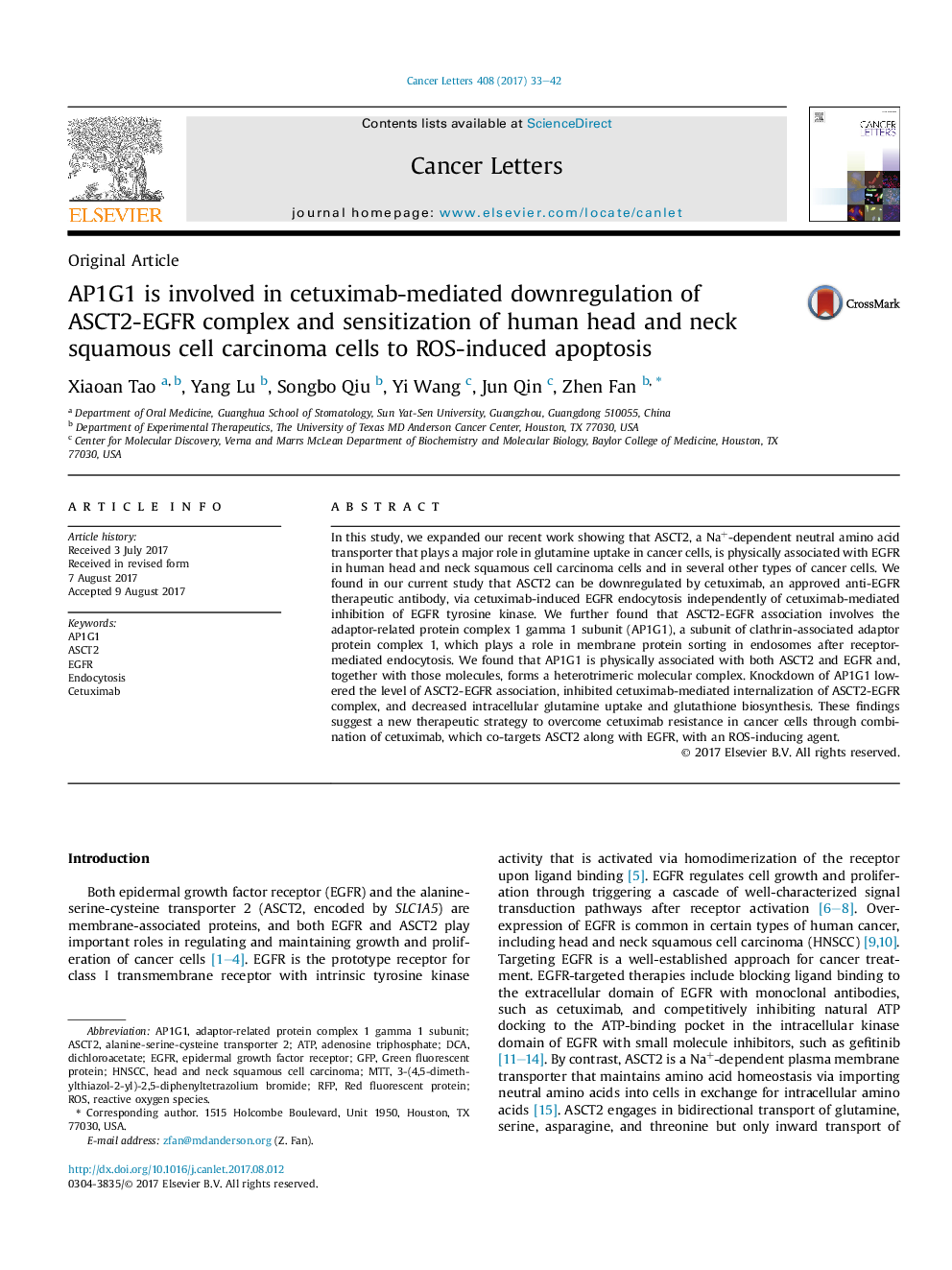| کد مقاله | کد نشریه | سال انتشار | مقاله انگلیسی | نسخه تمام متن |
|---|---|---|---|---|
| 5525301 | 1546661 | 2017 | 10 صفحه PDF | دانلود رایگان |

- AP1G1 is physically associated with ASCT2 and EGFR in a heterotrimeric complex.
- Knockdown of AP1G1 decreases the level of ASCT2-EGFR association.
- Cetuximab-induced downregulation of ASCT2-EGFR complex is AP1G1-dependent.
- Cetuximab-induced inhibition of GSH and sensitization to ROS are AP1G1-dependent.
In this study, we expanded our recent work showing that ASCT2, a Na+-dependent neutral amino acid transporter that plays a major role in glutamine uptake in cancer cells, is physically associated with EGFR in human head and neck squamous cell carcinoma cells and in several other types of cancer cells. We found in our current study that ASCT2 can be downregulated by cetuximab, an approved anti-EGFR therapeutic antibody, via cetuximab-induced EGFR endocytosis independently of cetuximab-mediated inhibition of EGFR tyrosine kinase. We further found that ASCT2-EGFR association involves the adaptor-related protein complex 1 gamma 1 subunit (AP1G1), a subunit of clathrin-associated adaptor protein complex 1, which plays a role in membrane protein sorting in endosomes after receptor-mediated endocytosis. We found that AP1G1 is physically associated with both ASCT2 and EGFR and, together with those molecules, forms a heterotrimeric molecular complex. Knockdown of AP1G1 lowered the level of ASCT2-EGFR association, inhibited cetuximab-mediated internalization of ASCT2-EGFR complex, and decreased intracellular glutamine uptake and glutathione biosynthesis. These findings suggest a new therapeutic strategy to overcome cetuximab resistance in cancer cells through combination of cetuximab, which co-targets ASCT2 along with EGFR, with an ROS-inducing agent.
Journal: Cancer Letters - Volume 408, 1 November 2017, Pages 33-42